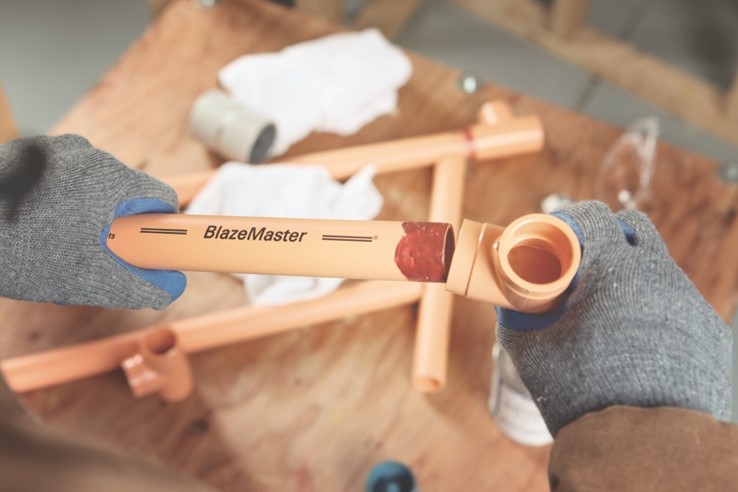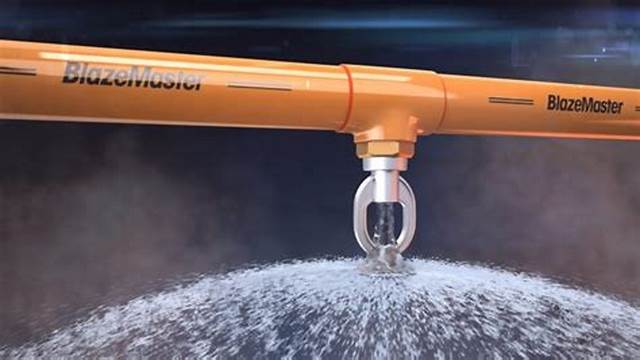Tips for Successful Cold Weather CPVC Installation
-
BlazeMaster® Fire Protection Systems are designed for straightforward CPVC installation across a variety of conditions, including cold environments.
-
In cold temperatures, special considerations for CPVC installation include handling fragility of materials, adjusting solvent cement applications, and allowing longer cure times.
-
Proper preparation, such as choosing the right tools and storing materials in warm conditions, significantly enhances the success of CPVC installations in colder settings.
BlazeMaster® Fire Protection Systems offers a tailored solution for fire protection, engineered to facilitate easy installation under diverse environmental conditions. The system's adaptability is particularly advantageous during installations in colder climates, where typical installation challenges can be effectively managed with careful planning and the right techniques.
Designing for Cold Weather Adaptability in CPVC Installation
Effective CPVC installation in cold weather begins in the design phase. It’s crucial to consider the natural expansion and contraction of CPVC piping due to temperature changes. Strategic design elements like directional changes in the piping layout or the inclusion of fixed expansion loops can mitigate stress caused by thermal expansion. Detailed guidance from BlazeMaster’s manufacturing manuals is indispensable for ensuring these modifications are correctly applied.

Optimising Tool Selection
The fragility of CPVC pipes and fittings in low temperatures necessitates the use of tools that minimise stress on the material. Instead of a ratchet cutter, which may exert undue pressure and cause cracks, a wheel cutter should be employed. Wheels specifically designed for cutting plastic materials offer the safest and most effective means of cutting, ensuring integrity regardless of the temperature.
Material Management and Preparation
Storing CPVC pipes and fittings in a consistently warm, covered environment prior to installation is ideal. Uniform temperature maintenance between pipes and fittings is vital before applying solvent cement. To maximise efficiency, consider prefabricating parts of the system in a heated space to reduce exposure to cold conditions.
When materials are exposed to cold, ensuring they are dry and free from ice or snow before installation is crucial. Handling should be attentive—avoid dragging or dropping the pipes to prevent them from becoming compromised. Inspecting the materials for any signs of damage such as cracks or gouges before use is also essential.
Handling Solvent Cement in Cold Conditions
Solvent cement requires particular attention during colder CPVC installations. It should be stored according to the manufacturer’s specifications to maintain its efficacy. If solvent cement gels (which means it is not free flowing) it should be discarded, as its chemical properties will have been compromised. To keep the solvent at a usable temperature, consider using an insulated storage bag, adding disposable hand warmers, or wrapping the can in a foam beverage jacket to insulate it from the cold.

Extended Cure Times and Testing
The resistance of CPVC to solvent penetration increases in colder temperatures, extending the time required for the solvent to soften the surfaces and for the joint to fully cure. This necessitates an adjustment in cure times to prevent premature pressure testing, which could lead to leaks. Always refer to the manufacturer’s manual for precise guidelines on extended cure times to ensure a fully functional system.
BlazeMaster® CPVC's design and installation flexibility make it an exceptional choice for fire protection systems, particularly in challenging conditions like cold weather.
TRUSTED PERFORMANCE
FOR LIFE
Partner with BlazeMaster® Fire Protection Systems, the most specified nonmetallic fire sprinkler systems in the world, offering easy installation, inherent corrosion resistance and excellent flame and smoke characteristics.
TRUSTED PERFORMANCE
FOR LIFE
Partner with BlazeMaster® Fire Protection Systems, the most specified nonmetallic fire sprinkler systems in the world, offering easy installation, inherent corrosion resistance and excellent flame and smoke characteristics.
